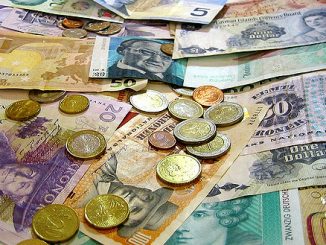The ‘international currency war’ mentioned by Brazil’s finance minister poses massive dangers for the world trade and financial systems. This column by one of the world’s most respected international economist argues that there is a better way. The G3 should engage in quantitative easing so they all can export more to each other. For the emerging markets, the danger lies in inflation, asset bubbles and trade retaliation. To shield their key manufacturing sectors, they should encourage the domestic demand for manufactures.
If the financial press is to be believed, the world is on the verge of a currency war. Central bankers have pulled out their bazookas in a desperate, take-no-prisoners effort to weaken their currencies.
- The Fed is preparing for another round of quantitative easing. If this results in a weaker dollar that boosts US exports, then no one on the FOMC will complain.
- The Bank of Japan, disconcerted by the conjuncture of a strong currency and weak economy, has already intervened in the foreign exchange market to push down the yen.
- The ECB has extended the term of its special bank credit facilities and will ramp up its government bond purchases if Europe’s sovereign debt crisis worsens.
- China continues to limit the appreciation of the renminbi.
- Brazil and India, having seen their currencies rise to painful levels, may feel compelled to take counter-measures.
The repercussions could be devastating. The Congress, seeing the US denied the benefits of a more competitive currency, is threatening China with a putative tariff. China has already fired a warning shot across America’s bow by slapping a tariff on US poultry exports. This dangerous dynamic, if allowed to spiral out of control, could bring down the global trading system.
Is the danger real?
Is the situation really so worrisome? Yes and no. Yes, sharp currency swings create tensions and have unintended consequences. But there is no need for sharp swings in the exchange rates between the dollar, euro and yen. The US, Japan and Europe all have weak economies. They all would benefit from a round of quantitative easing. If their central banks ease simultaneously, there is no reason for investors to favour one of their currencies over the others.
The problem is that the Fed, BOJ and ECB have not indicated when they will move and what kind of easing they will undertake.
- If the Fed moves but the ECB hesitates, the dollar will fall against the euro.
- If the ECB, seeing the European economy weaken, then follows, the initial currency swing will be reversed, wrong-footing investors who chose to ride the trend.
These are precisely the circumstances in which currency volatility demoralizes financial markets and fans trade tensions.
In addition, fear that the three central banks are out of ideas about how to use asset purchases to stimulate domestic demand creates the suspicion that all they have left is pushing down the currency with the goal of boosting external demand. This could, indeed, degenerate into a currency war that all three G3 economies can’t win.
There is a better way for the G3
But things need not go this way. If targeted asset purchases succeed in boosting domestic demand, then the G3 economies can, in fact, all export more to one another. Thus, the three central banks need to specify exactly what they will buy and explain through what channels those purchases will stimulate domestic demand. (I have my own ideas about exactly what they should do, but that’s properly the subject for another column.) Those who fear that the Fed, BOJ and ECB have beggar-thy-neighbour intentions will be reassured. This is not a time for constructive ambiguity.
Dangers for emerging markets
But none of this will resolve the dilemma facing emerging markets. If, emulating past Chinese practice, they follow the G3 currencies down, they risk inflation, asset bubbles and trade retaliation. If, like Brazil and India, they allow their currencies to rise, they risk damaging their manufacturing industries which depend heavily on exports. Manufacturing being the locus of technology transfer and learning by doing, their capacity to grow will be impaired.
It is tempting to say: limit the damage from currency appreciation by applying an across-the-board export subsidy. But this would not be WTO compliant. It would provoke retaliation. And, as any international economist worth his salt knows, export subsidies (together with import taxes) are exactly equivalent to currency devaluation. Applying export subsidies would mean that emerging markets were engaging in currency appreciation in principle but not in practice.
A better solution would be to encourage the domestic demand for manufactures. Demand could be encouraged through, inter alia, tax credits for purchases of household appliances like those with which Japan has experimented. Married with some further appreciation of the currency, this would leave the demand for manufacturing products unchanged.
Better still would be to figure out exactly which manufacturing sectors are sources of learning-by-doing and technology spillovers. Not all manufacturing sectors, presumably, are. Only those which generate these favourable external effects for growth should be the recipients of preferential tax treatment.
This sounds suspiciously like industrial policy. Well, what is keeping the exchange rate low as a way of boosting manufacturing activity but a form of industrial policy? Maybe now that this relatively blunt form of industrial policy has given rise to the spectre of a currency war, it’s time to consider a more refined alternative.
![]()
- Bulenox: Get 45% to 91% OFF ... Use Discount Code: UNO
- Risk Our Money Not Yours | Get 50% to 90% OFF ... Use Discount Code: MMBVBKSM
Disclaimer: This page contains affiliate links. If you choose to make a purchase after clicking a link, we may receive a commission at no additional cost to you. Thank you for your support!




Leave a Reply